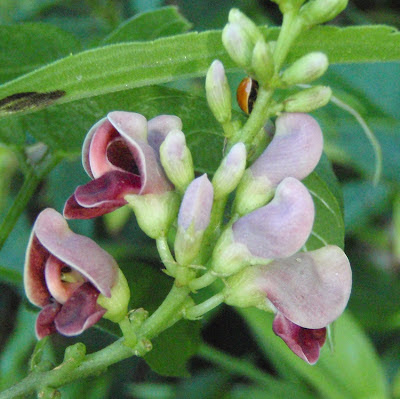Some of the birds here are common throughout much of the country: I've seen numerous robins, pine siskins, and goldfinches. Pictured here, a Red-tailed hawk that frequently hunts from a perch in dead upper branches of the cottonwood tree attracted a small flock of Magpies whose apparent purpose for flying in was to torment the redtail. The long-tailed Magpie is one of the Corvids; like the Blue jay, it is handsome, but wears out its welcome with its bold behavior and jarring voice. Four of them entertained us one evening by standing in the spray of irrigation water, then hopping up onto a large rock to shake and preen.
A Swainson's Hawk, about the length of a Red-tail, but with longer, narrower wings, frequently soars over nearby hills in company with numerous barn swallows. The Swainson's feeds on grasshoppers, small rodents, and snakes; small birds are unconcerned by its presence. On windy days, it faces into the wind and hovers as if suspended from a string. Before long, it will begin its migration to Argentina, the longest migratory route of the hawks.
We have 5 or 6 elegant sandhill cranes that frequent the area, well-announced by their unique strident creaky hinge chatter. Many small tracts nearby were planted to oats that have now been harvested for the grain, leaving stalks a foot tall, providing food and cover for birds.

























